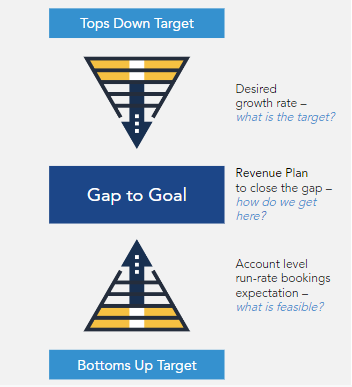Comparing last year’s SBI CEO survey results against this year’s shows a more cautious, even conservative, growth posture being embraced. A year ago, we saw CEOs leaning into proven markets with their growth teams. Growth strategies were noticeably clearer after the emergence from the pandemic. This year we see more hedging in growth options and less strategic clarity. Our interviews confirm this trend, with the word “agility” frequently attempting to mask strategic uncertainty.
While maintaining a hedged or agile growth approach may feel like the right posture, it’s often indicative of CEOs operating on their back foot, slowing decision-making, and obscuring focus during periods of economic uncertainty. About 60% of companies have begun their annual planning process, but planning and adjusting is always on for CEOs. In our one-on-one CEO interviews and SBI’s CEO Growth Advisory Board meetings, we have learned that CEOs who are focused on specific growth levers find more success, especially in uncertain or difficult conditions. Those who committed to a plan through the initial uncertainty of 2020 far outpaced the growth of those who elected to “wait and see” or adopt a more agile growth posture.
You’ve narrowed down and selected your growth bets using bottoms-up analysis to clearly define your growth targets including your gaps to growth. Creating your revenue plan is the essential framework for value creation and growth; the final step before rollout and execution. This plan will determine the alignment of go-to-market functions with strategic growth priorities in executing the bets and achieving established growth targets.
Foundation of a Good Revenue Plan:
- Identifies where you can expect to obtain revenue growth through five levers.
- Shows how bets will impact the different levers of revenue growth and budget and resource allocation.
- Companies must understand their bottoms-up capacity to know if and how they can take advantage of market opportunities. This type of modeling helps GTM teams understand what to adjust to meet the tops down target.
- Bets should align with bottoms-up potential – how will they augment your company’s ability to meet the tops down number? Through additional capacity, capability, or efficiency?

What are the differences between a Tops Down versus Bottoms Up approach?
|
Tops Down
|
|
Usually set by the Board and influenced by the market
- A realistic tops down number takes inputs from the market to set realistic and feasible revenue numbers
- Market factors to be considered include market growth rate, competitor growth rate, new entrants, new channels, etc
|
|
Bottoms Up
|
|
Use an account-based approach to project next year’s bookings
- Use account and market segmentation to understand opportunity by selling motion
- Based on historical trends and propensity to buy
- Perform bottoms-up capacity analysis to determine how current GTM teams can capture additional revenue potential
|
Those waiting to evolve their value creation strategy will be subjected to decision-making under duress. These businesses will rush through analysis to inform decisions. They’ll endure messy change management as they remobilize teams in a far less certain economic environment than today. Adding to the level of urgency, only half of CEOs participating in SBI’s 2022 CEO Growth Planning Survey felt confident in their growth plan and ability to execute on their existing growth plans – let alone navigate a change in that growth plan.
You know where you want to go, but your team isn't always as clear about how to get there. SBI is leveraging our expertise to help CEOs understand their precise value creation plan and map a highly tailored growth strategy to activate that plan by creating an Annual Planning Resource Center. The Resource Center is intended to provide guidance to commercial teams as they evaluate, plan and optimize their go-to-market processes. Teams can find resources for topics such as account segmentation, territory planning and comp and quota.
To access resources for your commercial teams, visit the Annual Planning Resource Center.

